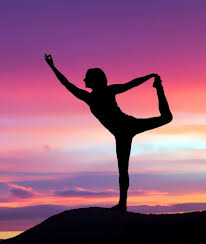By: Raquel Torres
If you want to increase the likelihood of reaching your goals and dreams, visualization is where it all begins. Just as affirmations or mantras are beneficial for motivation, focus, and effective goal setting, so too is a visualization or mental imagery.
It is the use of the imagination through pictures or mental imagery to create visions of what we want in our lives and how to make them happen. Along with focus and emotions, it becomes a powerful, creative tool that helps us achieve what we want in life. If used correctly it can bring about self-improvement, maintain good health, help you perform well in sports, and accomplish your goals in life.
In sports, mental imagery is often used by professional athletes to improve their skills by picturing the achievement of a specific feat, such as hitting or shooting a ball, riding a bike, swimming, or running a race, among other things.
Some benefits of visualization:
- The idea behind visualizing your goals is that if you “see” your goal, you are more likely to achieve it.
- It creates an inner motivation to strive for your goals and dreams.
- When you visualize your brain learns to recognize what resources it will need to help you succeed in reaching your goals.
- The consistent practice of visualization promotes positive thinking, it helps you to stay on track to be successful in the long run.
By experience, the more I practice this, the better mentally prepared I am before any life event or race week, this increases the possibilities to enjoy the whole process.
It’s a very good habit to do the visualization first thing in the morning, I also do it during training, or before going to bed.
We can apply this technique to anything in our life, big dreams, goals, interviews, speeches, personal life, any life challenge, or skill that we want to improve or learn.
Before any big event or activity, it’s very important to do the full movie in your mind several times. Dreaming is free and legal.
Visualization Scenarios Tips for Triathlete’s Race Week: 
- The race briefing, the expo, the environment with good energy.
- Setting an alarm the night before.
- Your waking up routine early in the morning.
- How your breakfast will taste, yummy.
- Getting to the race venue. Listening to your favorite music.
- Doing your gear checklist and completing all the to-do lists.
- Bringing your bike in the car or packing it.
- The weather (cold/hot/windy/raining).
- Setting up your transition. What do you need?
- Imagine the sounds, music, smells, the whole feeling.
- You see a lot of smiles and nervous people but you are staying very calm.
Some examples of a Triathlete Race Day simulation visualization:
This can help to ease any race day nerves.
For better results start 2 weeks or some days before, visualize for around 5 minutes or more your event, here some examples of scenarios to visualize for a triathlon race day:
- Waking up early: preparing to get to the race venue, how is the weather? is it dark or sunny?
- Preparing your transition: warming up, practicing your favorite mantras for that day.
- The race start countdown: 10, 9,8,7… Are you feeling cold, warm, confident, focused, positive? 3,2,1….Beeeep!
- The swimming: visualize a lot of athletes swimming close by you, the water temperature and waves? clear or dark water? You are feeling light, breathing often. And using your favorite mantras.
- Transition #1: Running from the water to the transition, finding your bike spot, do a mental rehearsal of all you need to do in the transition before touching your bike and getting out the T1 for your ride
- The bike ride: a smooth ride, how is the circuit? hilly or flat? You are feeling alert and strong, focused on your nutrition, how it tastes?
- Transition #2: Getting off the bike, running to find your bike spot, again a mental rehearsal with details of what you plan to do in the T2 before heading out for your run.
- The run: Visualize having a good form, well managing your thoughts with encouraging self-talk, then you see yourself crossing the finish line.
The intention of visualization is to prepare your mind and body for the reality ahead of time, when the day comes your mind/body will definitely feel familiar and perform better.















